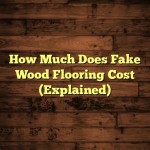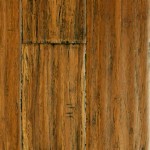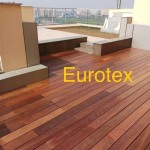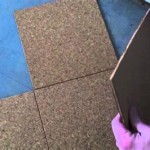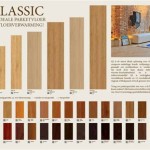```html
Lumber Liquidators Vinyl Plank Flooring: Examining Concerns About Potential Toxicity
Lumber Liquidators, now known as LL Flooring, has faced scrutiny regarding the safety of some of its vinyl plank flooring products. Concerns primarily revolved around the potential for elevated levels of volatile organic compounds (VOCs), particularly formaldehyde, emanating from the flooring. This article will delve into the issues surrounding Lumber Liquidators' vinyl plank flooring, focusing on the potential for toxicity, the regulatory landscape, and the steps consumers can take to mitigate potential risks. The primary focus will be on formaldehyde, as it was the core component of the flooring toxicity issue. It is important to consult expert advice for specific issues.
Vinyl plank flooring, a popular choice for its durability, water resistance, and affordability, is typically composed of several layers. These layers include a wear layer for protection, a decorative layer providing the visual appearance, and a core layer providing structural stability. The core layer can be made of various materials, including wood-plastic composite (WPC) or stone-plastic composite (SPC). These materials may contain adhesives and binders that can release VOCs into the air, especially when new. The off-gassing of VOCs is a common characteristic of many new building materials, but the concentration and type of VOCs determine the potential health risks.
The Formaldehyde Issue and Its Health Implications
Formaldehyde is a colorless gas with a pungent odor. It is a naturally occurring substance found in small amounts in the environment and is also used in the production of many building materials, adhesives, and resins. In high concentrations, formaldehyde can cause a range of adverse health effects. Short-term exposure can lead to irritation of the eyes, nose, and throat, as well as coughing, wheezing, and skin irritation. Long-term exposure has been linked to more serious health problems, including respiratory illnesses and, in some studies, an increased risk of certain types of cancer. Individuals with pre-existing respiratory conditions, such as asthma, and young children and the elderly are often more susceptible to the effects of formaldehyde exposure.
The concerns regarding Lumber Liquidators’ vinyl plank flooring primarily surfaced around products sourced from China. Allegations arose that some of these products contained formaldehyde levels exceeding established safety standards. These allegations led to investigations by regulatory agencies and independent testing, which further fueled the controversy. Media reports highlighting potential health risks associated with the flooring prompted widespread consumer concern and legal actions against the company.
Specifically, the concern was not necessarily about vinyl flooring specifically, but that the core material for some vinyl plank flooring (wood) was using formaldehyde-based adhesive, and that this adhesive exceeded allowable limits. Formaldehyde is a known volatile organic compound that can off-gas from products containing it. Since many people spend the vast majority of their time indoors, maintaining healthy air quality is paramount.
Regulatory Standards and Compliance
Several regulatory bodies establish standards for formaldehyde emissions from building materials, including flooring. In the United States, the Environmental Protection Agency (EPA) has established formaldehyde emission standards through the Formaldehyde Standards for Composite Wood Products Act of 2010, often referred to as the Formaldehyde Rule. This rule sets limits on formaldehyde emissions from hardwood plywood, medium-density fiberboard (MDF), and particleboard, which are commonly used in the manufacturing of flooring products. The California Air Resources Board (CARB) also has its own, often more stringent, standards for formaldehyde emissions. Compliance with these regulations is crucial for ensuring the safety of flooring products and protecting public health.
The EPA's Formaldehyde Rule requires manufacturers to test their products for formaldehyde emissions and to certify that they meet the established limits. Third-party certification programs, such as those offered by CARB-approved third-party certifiers (TPCs), play a vital role in verifying compliance. These certification programs involve independent testing and auditing of manufacturing processes to ensure that products meet the required standards. Products that meet these standards are typically labeled as such, providing consumers with assurance that the flooring has been tested and certified to comply with formaldehyde emission limits.
The lawsuit concerning Lumber Liquidators' vinyl plank flooring argued that the company violated the California Safe Drinking Water and Toxic Enforcement Act of 1986, also known as Proposition 65, by exposing consumers to formaldehyde without providing adequate warnings. This underscores the importance of clear and accurate labeling of products containing potentially hazardous substances. Consumers should carefully review product labels and safety data sheets (SDSs) to understand the potential risks associated with a product and to take appropriate precautions.
Mitigating Risks and Making Informed Choices
Consumers concerned about potential formaldehyde exposure from vinyl plank flooring can take several steps to mitigate risks and make informed choices when selecting flooring products. Firstly, it is crucial to research the manufacturer and the product's compliance with relevant formaldehyde emission standards. Look for products that are certified by reputable third-party organizations and that are labeled as compliant with EPA or CARB standards. Requesting documentation from the retailer verifying compliance is also a prudent step.
Proper ventilation is essential for reducing indoor air pollution, including VOCs emitted from flooring and other building materials. Increasing airflow can help to dissipate VOCs and improve air quality. Consumers can open windows and doors regularly, especially during and after installation of new flooring. Using air purifiers with HEPA filters and activated carbon can also help to remove VOCs from the air.
Consider allowing new flooring to off-gas in a well-ventilated area before installation. This can significantly reduce the amount of VOCs released into the indoor environment after installation. This step is especially relevant for consumers who are particularly sensitive to VOCs or who have pre-existing respiratory conditions.
When choosing flooring, explore alternative options that may have lower VOC emissions. Some manufacturers offer low-VOC or VOC-free vinyl plank flooring products. Other flooring options, such as solid hardwood, tile, or cork, may also have lower VOC emissions compared to some vinyl plank flooring products. Researching the VOC content of different types of flooring can help consumers make informed decisions based on their individual needs and concerns.
In the event that consumers suspect their existing flooring is emitting excessive levels of formaldehyde, they may consider conducting indoor air quality testing. There are various testing kits available that can measure formaldehyde levels in the air. Professional indoor air quality assessments can also provide a more comprehensive evaluation of potential sources of pollution and recommendations for remediation.
Finally, when installing any type of flooring, it's important to follow the manufacturer's instructions carefully. Using the recommended adhesives and installation techniques can help to minimize VOC emissions and ensure the long-term performance of the flooring. Consider using low-VOC adhesives and sealants to further reduce potential indoor air pollution.
The issues surrounding Lumber Liquidators' vinyl plank flooring serve as a reminder of the importance of product safety and transparency in the building materials industry. Vigilance and continuous monitoring of standards by regulatory bodies is essential to ensuring consumer safety. Consumers should take an active role in researching products, understanding potential risks, and taking precautions to minimize exposure to harmful substances.
Consumers should also be aware that while the focus has been on formaldehyde, other VOCs can be present in vinyl plank flooring and other building materials. These VOCs can also contribute to indoor air pollution and potentially adverse health effects. It is important to consider the overall VOC content of a product and to take steps to mitigate exposure to all potential pollutants.
```
Over 100 Toxic Lumber Liquidators Flooring Claims Filed

Are Vinyl Floors Toxic Olde Tyme Floor

Cdc Revises Lumber Liquidators Flooring Cancer Risk

Are Vinyl Floors Toxic Olde Tyme Floor

Non Toxic Vinyl Plank Flooring Brands The Risks My Chemical Free House

Are Vinyl Floors Toxic Olde Tyme Floor

Is Fake Wood Flooring From China Killing You Or Just Your Investments Thestreet

Is A Vinyl Floor Considered Toxic
I Need To Replace My Flooring And Am Worried About The Toxicity Of Most Them Especially Vinyl Planks Which Brand Would Be Free Toxins Quora

Tranquility Ultra 5mm River Walk Oak Waterproof Luxury Vinyl Plank Flooring 6 In Wide X 48 Long Ll

